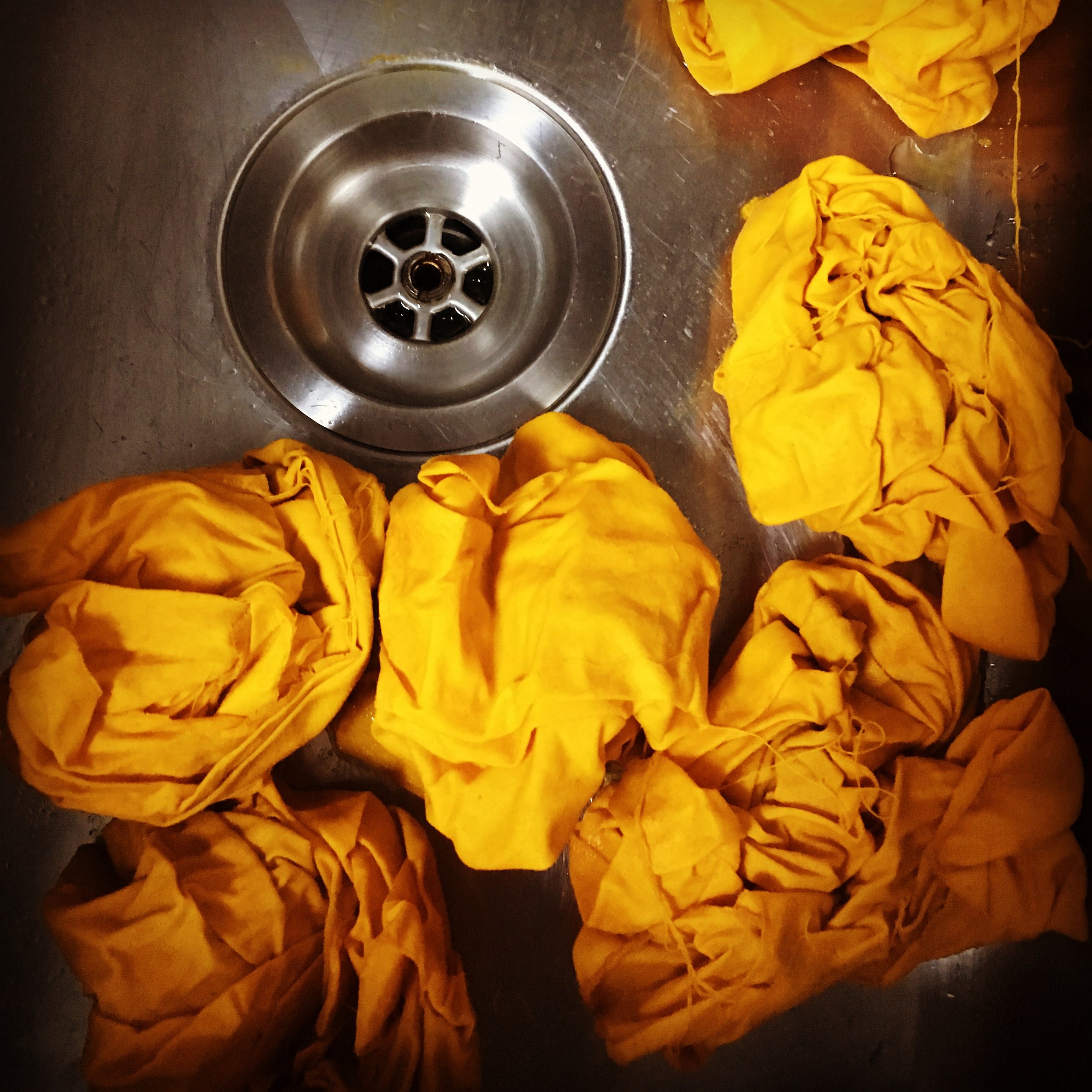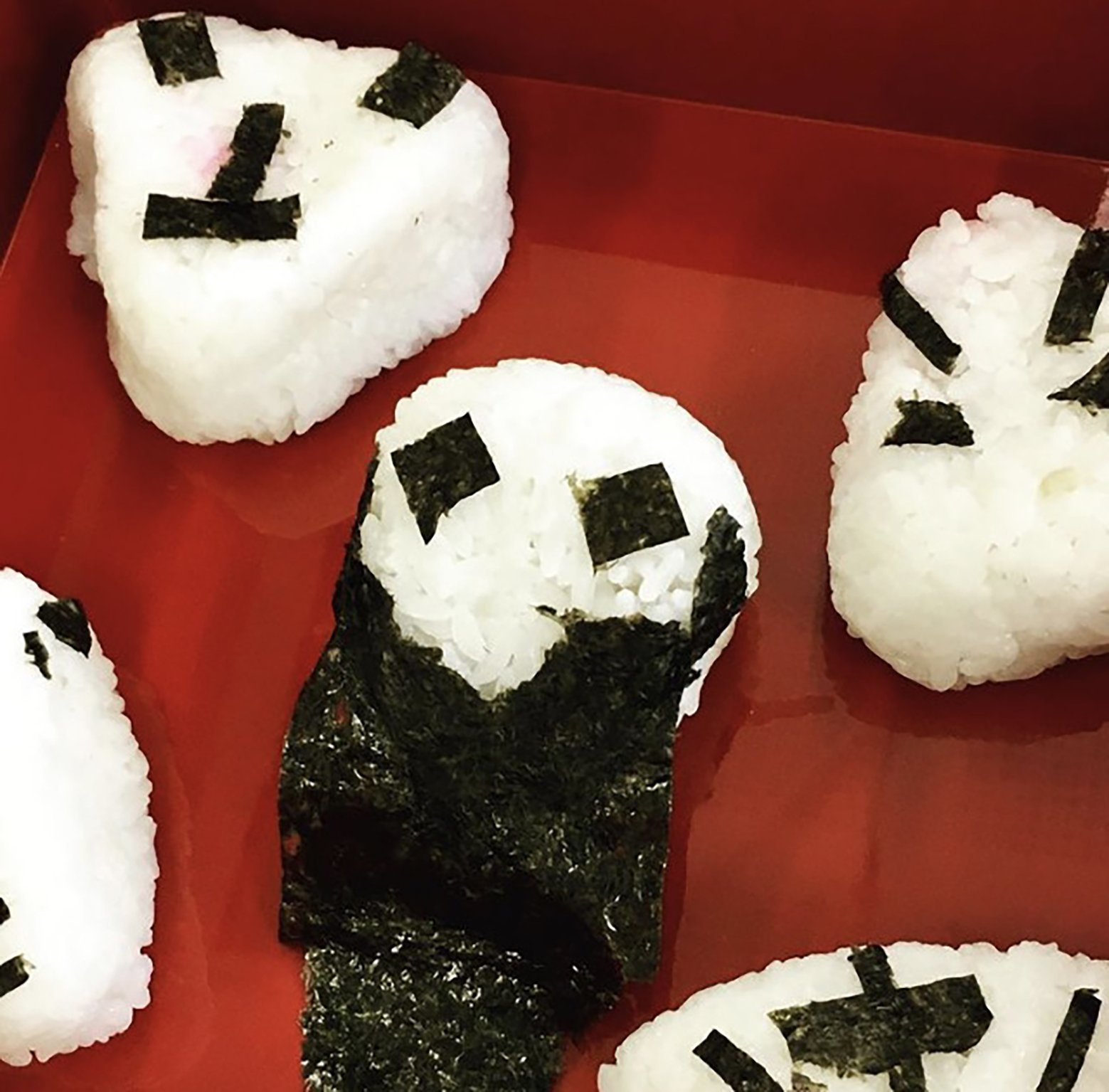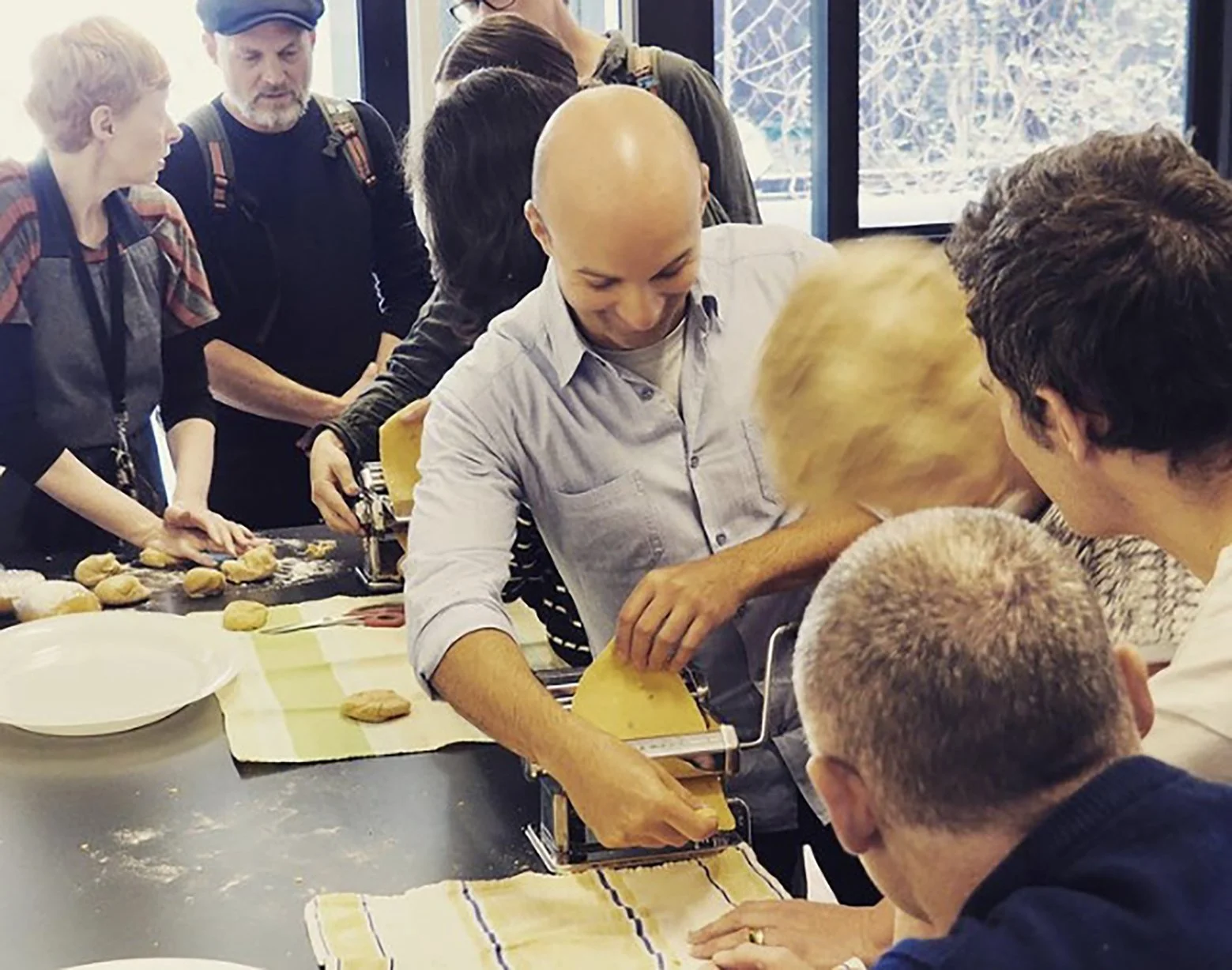gather share discuss
I began the regular gather share discuss lunch in 2017. RMIT University Communication Design academics cook and eat together; GSD meals, as relational pieces have evolved with the natural involvement of enthusiastic colleagues. Inspiration comes from multiple sources. To name two: Berlin based Studio Olafur Eliasson provides lunch for a multi-disciplinary studio of 90, from a kitchen centrally located within the studio. Eliasson says the philosophy of the kitchen is the sharing of food AND ideas. Food is organic, vegetarian, locally grown and sourced within a 10km radius of the studio. GSD meals are vegan and cater for various food allergies and intolerances for inclusivity.
Chef and activist Alice Waters developed the Rome Sustainable Food Project at the American Academy in Rome. The RSFP grows organic produce within their own kitchen garden and academics can volunteer to work in the garden or kitchen. There is a keen awareness of nutritional balance, intelligent eating and conscious consumption. Waters is a mentor to SOE.
‘The dining table at the Academy isn’t just delicious, it’s an idea that brings us back to our senses and can be a model for educational institutions everywhere’ - Alice Waters
Gather, share, discuss 2017. Linen, turmeric. Linen table napkins to be used for our gather share discuss lunches. Laundered after each GSD, these artefacts document our meals, the fading cloth representing the activity of lunches made and eaten together, conversation, exchange of ideas, the passing of time and shared space.
The fringes are made by pulling away the threads on the edges of the napkin fabric, one at a time. It’s a repetitive yet therapeutic process. Edges are then sewn to prevent further fraying. I have dyed the fabric with turmeric, used for centuries in Asian cooking as a spice and medicinal herb. Its health-giving properties are found in the compound curcumin, acting as an anti-oxidant and anti-inflammatory.
Turmeric has a long history of being used to dye textiles, following traditional Hindu Ayurvedic principles. Artisans in India consider their raw materials not just for their colour but also for their healing benefits from touching the skin. As a natural dye, a beautiful bright yellow, the colour will gradually fade with use.
Dying linen with turmeric
Roasted vegetables with smoked almonds and optional feta gather share discuss 2017
We learnt the art of making traditional Japanese rice balls with Yoko Akama, making these for our next GSD lunch. Amongst us, this gathering brought together a retired academic, a young research assistant and our School of Design Dean 2017
Self-portraits 2017
gather share discuss making fettuccine together with Andy Simionato. Sage and burnt butter sauce 2017
Drying the fettuccine on a broom handle in the RMIT building 9 courtyard 2017
Mexican gather share discuss meal 2018
Preparing tortillas 2018
Cooking tortillas together on the staff room sandwich press. We have a small kitchenette in the SoD staff room, unlike the SOE kitchen in Berlin. Lends itself to creativity 2018
















